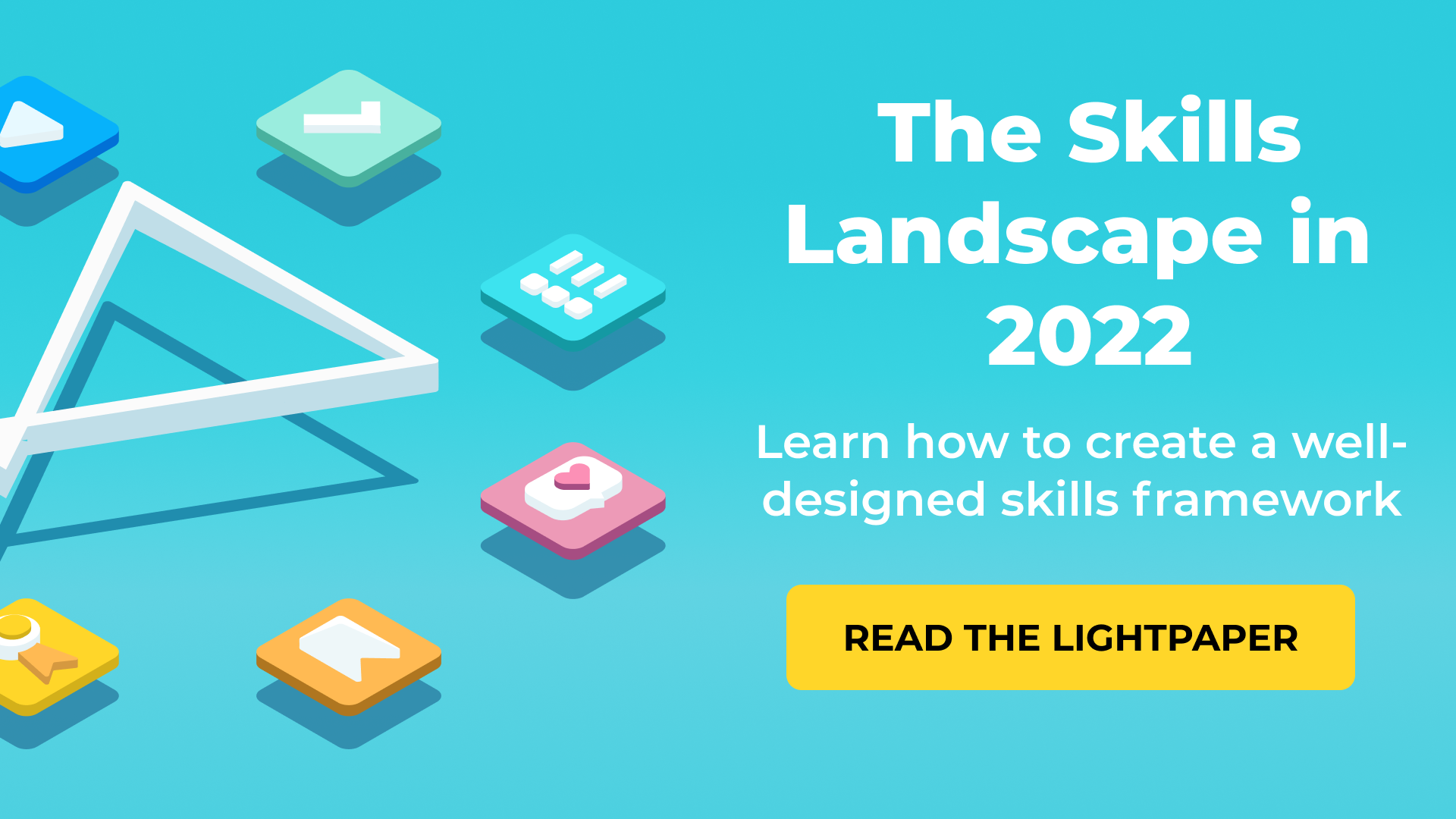For an LXP to make a real impact on the right kind of client, top of the requirements list is “executive buy-in”. L&D often ignores this. Part of the problem is the idea that buy-in is a part of company culture and therefore out of anyone’s control. It’s also just a demoralising task: sales doesn’t need to spend half its time justifying itself, why should learning?
However, this lobbying might be the most important thing you’re not doing. Funding, streamlining, and that cultural clout that makes people actually read your emails all come with high-level support. Especially in high-impact launches, this is irreplaceable.
The problem is that getting this support is easier said than done. Learning is very used to being brushed aside. But, that’s more a matter of method than culture. Technique, more than anything, decides what’s “worthy” and “unworthy” of executive time. You just need to know the buttons to press.
Here’s your manual:
1) Anchor learning around specific use-cases
Businesses are slow and tentative. Leaders need to see immediate, relevant value to mobilise. And once value’s demonstrated, they’ll come back for more. So, how do you go about constructing this tangible thing that executives can invest in?
First, look at areas into which your company is planning to expand: markets, operations, innovations. Then, decide which one of them would be most measurably helped by a learning initiative (anything around digital transformation is an easy winner). Once you’ve picked an area - work out a couple of use-cases which you can turn into flagship initiatives. Or even better, align with an existing change programme.
For example, if your company wants to streamline its operations and handovers, you could make the proficiency in a specific cloud technology in a specific area your route in. Developing the skills and frameworks to support this will be a foundation for the future. Anchor this upskilling around one specific, well-trumpeted launch. Firstly, to generate urgency and, secondly, to demonstrate immediate usefulness and ROI.
To get this started and keep it going, you need evidence, and that comes in the form of…
2) Practical data
At the management level of a business, you’re constantly wading through ideas, directives, motions. Data is what separates the waffle from the actionable stuff. So that’s how to get attention.
But, not all data is equal. Out-of-date, disconnected, or simply boring data is very unlikely to sway a decision maker. The key is to get on-the-ground, value-aligned stuff. Rather than just measuring the number of people using a site, find the extra nuance: which content is most used, how useful learners ranked it as, when was it used, what categories are under/over supplied (the latter is also a good measure of where learners are actually interested in improving).
If you can, integrate that with external data: larger industry trends, rates of technological innovation etc. The clearer and more forward looking a picture you can paint with your data, the easier it is for C-suite to just say “yes”. And finding that data is less work than you think.
3) Speak your organisation’s language
Every business has its own internal ‘language’. Less in the sense of the words they use, more in terms of processes and measuring results. This study has found that middle managers who put forward ideas in a company’s ‘language’ are more likely to be listened to. Learning can use this in two ways:
Metrics
Every company has a set of measurables that matters most to them. If you can lock your data insights to those particular metrics, management can immediately see how your changes would affect their picture of the future.
Correspondingly, as Jennifer Kelly Dominiquini, chief marketing officer at BBVA Compass, points out: “[initiative proponents] could be the most analytically driven people on the planet… but if they’re measuring the wrong things, or measuring things that don’t match up to what others are measuring, you don’t have buy-in at all.”
Skills
Skills should be an organisation’s standardised measure of content and capability. If an organisation does have a prioritised, productised skills framework, success in learning initiatives can be understood in terms of business value. When everyone understands how improving a particular skill will save your specific business time and money, it’s very easy to green light a learning initiative with that skill in the title.
The problem is that most organisations don’t have a skills framework, have multiple competing skills frameworks, haven’t aligned their framework with future capabilities their organisation actually needs, or don’t agree on what each skills means in the context of their business.
So, an easy way to get ahead of almost all your learning rivals is to create a data backed, universally understood framework. With that, L&D and C-suite can understand business value and learning goals in a common language. And with understanding comes influence.
The Ultimate Upskilling Cheat Sheet for 2021: Get practical bite-sized advice to succeed in upskilling your workforce.
4) Play to expertise
To get management to buy into an initiative, reach across the departmental borders. If an initiative is backed by multiple departments, it’ll be harder for executives to ignore and will probably have a wider impact. You’ll also be able to leverage more personal relationships to boost your impact on leaders.
But there’s a deeper point. This study found that expertise was a large factor in getting buy-in for an idea. And it plays both ways: if you have more expertise, you’re more likely to present a convincing case. At the same time, if management is skewed towards a particular field, they’re more likely to see value in that area. So if most of your management has a marketing background, they’ll be more convinced by marketing solutions.
So, to heighten your chances of getting buy-in, involve the experts - the people who your initiative will most likely effect. They’ll be able to make a more convincing case than you. Also, it’s not a bad idea to pick your battles to suit your leadership’s biases.
5) Know when to catch the wave
Business change works in overlapping cycles. Knowing when to capitalise on the momentum of an internal or external shift will determine whether your initiative catches attention.
With big external changes (technological, cultural, political) it’s best to ride the peak of their urgency. Alternatively, it pays to get on at the ground floor of internal launches/shifts. The open-endedness of these early stages give you an opportunity to code your learning into the DNA of the end product.
6) High and low framing
Once you have the plan in place, you’ve still got half the battle to go. Luckily there’s a lot of salient research to help you frame your issue in a way that makes leaders care about it. It might seem low-priority. But, in terms of getting buy-in, the marketing of an idea is as important as the idea itself.
For example, a study found that the current emphasis on drunk drivers as a cause of traffic accidents (as opposed to road conditions, policing, vehicle safety etc.) is a result of concerted issue framing.
The same research also found that the way you pose a problem to a company can define how (and whether) they respond. In practice, “high” and “low” framing is a good rule of thumb.
Specifically: high reward, high urgency, high threat; and low damage, low admin, low complexity worked best. This isn’t to say you should exaggerate or underplay an issue for impact. Rather, you should know the levers that prick up management ears.
7) Inject some novelty
People are more likely to act on information if it shocks them. It explains all those adverts headlined: “DID YOU KNOW THAT YOUR [name item] HAS MORE GERMS THAN A TOILET SEAT.” Similarly, if you can incorporate some data that surprises, shocks, or catches executives off guard they’re more likely to listen, and act (according to this study).
Getting the right punch circles back to the ‘practical data’ point. One of the best ways to convince an executive is to highlight how out of touch they might be with ‘on the ground’ learning.
8) Put a human face on it
Issue selling is partially about emotional management. Accepted wisdom for the seller is to maintain a mix of passion and professionalism about an idea. Authenticity sells but hysteria doesn’t.
However, the other half of the job is managing the emotions of the person you’re selling to. Studies indicate that showing the human impact of a particular initiative (both personally and professionally) gives leaders a mix of emotional and logical incentives to invest.
For L&D, this is another way to leverage personal data. If you can show how individual learners are currently learning and how a particular shift would personally and professionally benefit them, and then scale it up, leaders will listen.
9) Pre-pack a solution
Don’t present a problem without thinking about how to solve it. Research suggests that leaders listen to issues raised by managers if they pair them with solutions.
It doesn’t have to be set in stone (learning is often a bit too complicated to have immediate answers.) But, putting forward a plan detailing how you would work to find a solution is a good replacement.
10) Be the one to question your own argument
Leaders are aware that you’re not impartial. That’s another reason why cross-department initiatives have more impact. However, this study found that impartial leaders respond better to employees who attempt to look at both sides when suggesting a course of action.
So, if you’re presenting your proposed initiative, don’t be afraid to poke holes or question it when you need to. Leaders want the whole picture - and if you don’t give it to them they’ll look for it somewhere else (if they don’t just dismiss the idea immediately). So, you should be the one to give them the nuance because you’re still going to make the best case for your learning.
Get the right tools
The key material thing that you need to get executive buy-in for your learning is productive data. Data on content, usage, skills etc. It’s what our clients repeat again and again. You already have all the data you need, you just need to unlock it.



